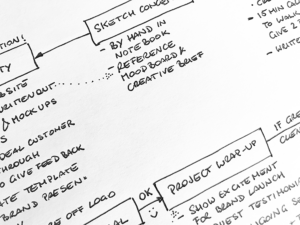
What Makes A Good App
Table of Contents
TLDR
What makes a good app?
Building a successful mobile application encompasses several critical factors. Key elements include understanding the target audience and market, defining a unique value proposition, setting clear goals, and developing a feature list aligned with user needs.
Effective UI/UX design principles like clarity, consistency, and feedback are vital. Choosing the right development approach (native, hybrid, or cross-platform) and incorporating user feedback ensures a tailored and efficient app. Rigorous testing for functionality, usability, performance, and security is essential.
A well-crafted App Store listing, strong launch strategy, and use of social media for promotion are crucial for initial traction.
Post-launch, monitoring app performance, regular updates, and a long-term growth strategy are necessary for sustained success and adapting to industry trends.
Introduction
The Evolution of My Digital Companions
My affair with apps started as a curiosity but swiftly became necessary as my previous agency was an early adopter of app development in 2012.
I remember the days of navigating through the basic yet novel apps on my first smartphone (Facebook, Apple Music, and BBC News were all so different back then), feeling like a pioneer in a new digital frontier.
These apps were simple, but they opened up a world of possibilities that was previously unimaginable. Over time, as the apps evolved, so did my reliance on them.
From the hustle and bustle of city life to the quiet moments at home, apps have been my constant companions, helping me navigate, connect, and unwind. They’ve become so integrated into my daily routine that imagining a day without them is hard.
Setting the Scene
Apps are now more than just a convenience; they’re a cornerstone of modern living. They’ve revolutionised the way we communicate, work, and entertain ourselves.
It’s astounding to see the sheer variety of apps available at our fingertips, each vying for our attention in an increasingly crowded marketplace. This digital revolution has changed how we interact with technology and set new standards and expectations for what we consider innovative and useful in an app.
Thesis Statement
What truly sets an app apart? Is it the clever use of technology, the intuitive design, or perhaps the unique value it offers its users?
I intend to delve into these questions through this article, drawing from my experiences and observations. I’ll explore the key characteristics that make an app functional and remarkable.
This journey will take us through various app design and development facets, shedding light on what makes an app a must-have in our digital quiver.
• • •
User Experience (UX) Design
Definition of UX
Let’s start by demystifying ‘User Experience’ or UX. In simple terms, UX is about how a person feels when interacting with an app. It’s the journey from opening the app to navigating its features and completing a task.
Good UX isn’t just about looking pretty; it’s about creating an efficient, enjoyable, and accessible experience for the user. It’s the difference between an app that becomes a daily necessity and one that’s quickly forgotten.
In my explorations, I’ve found that UX is the soul of an app. An app with a well-thought-out UX design doesn’t just perform tasks; it does so in a way that feels almost second nature to the user. It’s a crucial component that can make or break an app’s success.
Personal Insights
Reflecting on my experiences, apps with superior UX have always left a lasting impression. I recall building a smart thermometer app for one of our healthcare clients in 2017 that turned a mundane task into a delightful experience.
The app’s intuitive design, easy navigation, and engaging visuals made monitoring fever and temperature in your child simple but surprisingly intuitive. This positive emotional response is a testament to the power of effective UX design. It turns users into advocates and casual browsers into loyal customers.
Key Elements of Good UX
So, what makes for good UX? From my perspective, three key elements stand out:
- Simplicity: The best apps are those that don’t overwhelm the user. They offer a clean and uncluttered interface, making it easy to find what you need without unnecessary complications.
- Ease of Navigation: A great app guides the user intuitively through its features. It’s about having a logical flow that feels natural. When I use an app, I don’t want to figure out how to get from point A to point B – it should be obvious.
- Intuitive Design: The app should anticipate the user’s needs and preferences. For instance, a reading app that adjusts brightness based on the time of day shows a level of thoughtfulness in its design, significantly enhancing the user experience.
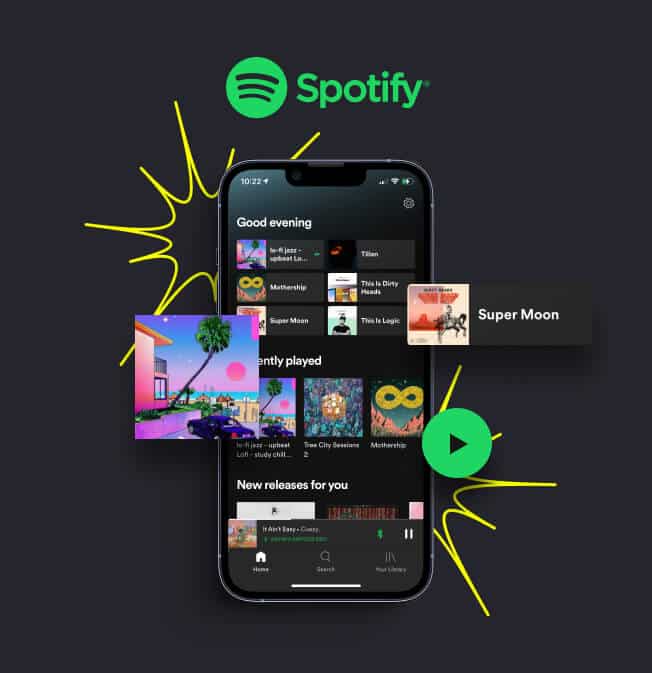
Real-world Examples
Several apps exemplify outstanding UX design. Take Spotify, for example. Its success isn’t just due to its vast music library and ability to provide personalised recommendations and easily navigable playlists. The seamless transition between songs, the straightforward way of creating playlists, and the intuitive layout make the user’s journey enjoyable and hassle-free.
Another prime example is Google Maps. This app takes something as complex as navigation and turns it into a simple, user-friendly experience. Whether finding the fastest route or exploring new places, Google Maps does it with such finesse that it’s become an indispensable tool for travellers and commuters.
Good UX is a blend of simplicity, intuitive navigation, and thoughtful design. It’s about understanding the user’s needs and crafting an almost tailor-made experience. As we delve into what makes a good app, it’s clear that UX is not just a part of the app; it’s the foundation upon which successful apps are built.
• • •
User Interface (UI) Design
Understanding UI
While User Experience (UX) is the journey within an app, User Interface (UI) is the aesthetic and interactive elements that make the journey possible. It’s about the buttons you tap, the text you read, the colours you see, and the overall visual layout. If UX is the storyline of a great novel, UI is the cover, typography, and page layout that entices you to pick up the book. Both are crucial, but they play different roles.
In my experience, a brilliant UI can captivate users even before discovering an app’s full functionality. That first impression can draw a user in or push them away.
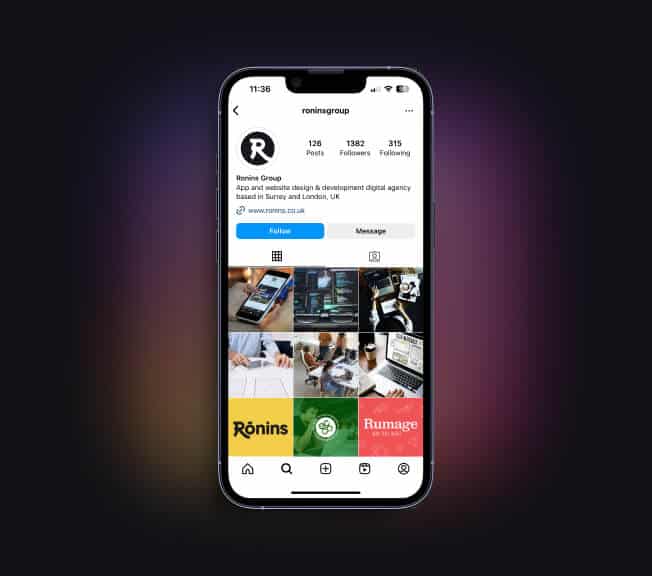
My UI Preferences
Personally, I’m drawn to apps with a clean and modern UI. I appreciate when an app uses whitespace effectively, making it easier to focus on what’s important without feeling overwhelmed.
Colour schemes play a big part, too. I’ve always been partial to apps that use colour (although I am red and green deficient) for aesthetics and as a functional element to guide the user through the app.
An example that springs to mind is Instagram. Its minimalistic interface focuses your attention on the photos and videos, which are the heart of the app. The navigation is intuitive, the icons are familiar, and the colour palette is understated yet effective.
Characteristics of Effective UI
From my observations, several characteristics are key to effective UI design:
- Aesthetics: The visual appeal of an app can’t be overstated. It’s not just about looking good but creating a visual language that communicates the app’s purpose and enhances its usability.
- Consistency: Consistency in UI design breeds familiarity and comfort. When buttons, colours, and typography are consistent, it helps me navigate the app with ease, knowing what to expect from each interaction.
- Responsiveness: An app that looks great but doesn’t respond well loses its charm quickly. The responsiveness of the UI is critical. It should be fluid, with transitions and animations that feel smooth and natural.
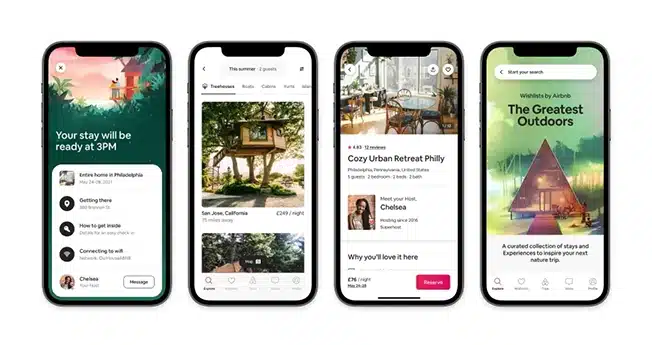
Case Studies: Examples of Exemplary UI Design
Some apps have set the bar high in terms of UI design. Take Airbnb, for instance. The app combines beautiful imagery with a simple layout, making finding a place to stay an enjoyable experience. The UI elements are not just visually pleasing but also help in making informed decisions with ease.
Another notable example is Uber. The app’s UI is straightforward yet sophisticated. The map interface, car options, and fare estimates are presented in a way that’s easy to understand and interact with. The simplicity of booking a ride with just a few taps is a testament to its excellent UI design, although I did notice it took them a few times to get this right over several releases in its early years.
UI design is much more than just the outer shell of an app. It’s a crucial component that, when done right, complements the UX and elevates the entire user experience. A great UI is visually appealing, consistent in its design elements, and responsive to user interactions. As we delve further into what makes a good app, the role of UI in captivating and retaining users becomes unmistakably clear.
• • •
Functionality and Performance
Defining Functionality
In my view, an app’s functionality is its ability to perform tasks efficiently and effectively – it’s the ‘what’ and ‘how’ of an app’s purpose. A functionally robust app not only provides the features it promises but does so in a way that enhances the user’s experience. It’s about meeting user needs through practical and innovative features.
For me, an app’s functionality is its commitment to the user. An app might have a stunning design, but it becomes inconsequential if it fails to perform its core functions seamlessly. It’s like having a beautifully designed car that can’t drive smoothly; the beauty quickly loses its charm.
Performance Matters
The performance of an app significantly influences my satisfaction and overall user experience. Slow apps that crash frequently or have bugs can be incredibly frustrating. Performance issues interrupt the user experience and can erode trust in the app. The current Britsh Gas app is one of these apps that I find incredibly frustrating. It’s not hard to get this stuff right.
In my experience, nothing is more off-putting than an app that’s slow to respond or crashes mid-task. It disrupts my workflow and leaves me hesitant to rely on the app in the future.
Crucial Features
Three key features are essential to the functionality and performance of an app:
- Speed: In our fast-paced world, an app must operate quickly and efficiently. Slow loading times and laggy interactions can be a major deterrent for users, including me.
- Stability: An app must be stable and reliable. Consistent crashes or glitches can quickly lead users to abandon the app for a more reliable alternative.
- Compatibility: With the variety of devices and operating systems available, an app must be compatible across different platforms. This ensures a broader reach and a uniform experience for all users.
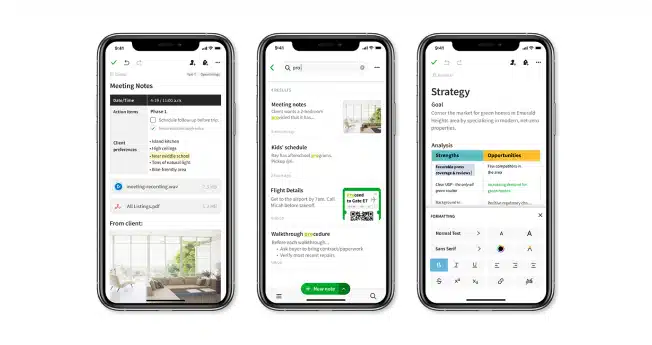
Exemplary Apps
Several apps excel in functionality and performance, becoming staples in my digital life. One such app is Evernote. Its ability to sync across devices seamlessly, with fast loading times and reliable performance, makes it an essential tool for note-taking and organising information.
Another example is WhatsApp. Its simple yet powerful functionality, including instant messaging, voice, and video calls, works flawlessly across various devices and networks. The app’s consistent performance, even on low-bandwidth connections, is commendable.
To sum up, the functionality and performance of an app are the bedrock of its success. An app must be feature-rich, cater to the user’s needs and perform those functions efficiently and reliably. The apps that manage to achieve this balance are the ones that find a permanent place on our devices and in our daily routines. As we continue to explore the ingredients of a good app, the importance of functionality and performance becomes increasingly evident.
• • •
Customer Support and Maintenance
The Need for Support: Ensuring User Confidence and Trust
In my journey through the digital world, I’ve realised that excellent customer support is not just a benefit; it’s a necessity for any good app. It’s about creating a trustful relationship between the user and the app. When an app provides effective customer support, it tells me, as a user, that the developers are committed to my experience and are willing to engage to make it better.
Customer support is the bridge that connects users with the app’s creators. It’s a channel for feedback, problem-solving, and enhancement. In my opinion, a good app excels in its primary functions and provides a safety net for when things don’t go as planned.
Personal Experiences
I’ve had my fair share of experiences where customer support turned a potentially negative experience into a positive one. For instance, I once faced a syncing issue with a fitness-tracking app called Fitbit, and another from Spotify helped me recover my account after it had been hacked and I was locked out.
Their support team’s prompt and helpful response resolved my issue and gave me a heightened sense of loyalty to the app. It transformed a moment of frustration into one of appreciation.
On another occasion, a quick response from a food delivery app’s customer service turned a delayed order situation from a dinner disaster into an example of exceptional service, complete with apologies and compensation. Such experiences reinforce my trust in an app and ensure its continued use.
Ongoing Maintenance
The importance of regular updates and bug fixes in maintaining an app’s health and relevance cannot be overstated. These updates indicate that the app is evolving, adapting to new technologies, and responding to user feedback. It’s about staying ahead in the game and ensuring the best possible experience for the user.
Regular maintenance is crucial for someone who relies heavily on various apps. It’s reassuring to know that my app is being looked after, that any issues will be promptly addressed, and that new features are being added to enhance my experience.
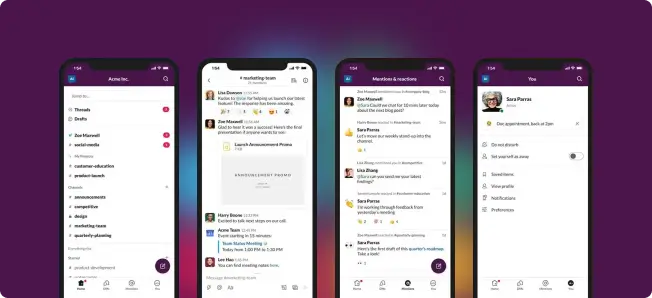
Industry Standards
Some apps set the gold standard for customer support and maintenance. For example, Dropbox stands out for its responsive customer service and regular updates, ensuring the app remains user-friendly and secure. Their proactive approach to resolving issues and rolling out improvements is commendable.
Another example is Slack. Their customer support team is known for being attentive and efficient, turning potential frustrations into positive interactions. Additionally, their regular updates keep the app running smoothly, enhancing the user experience.
So, customer support and ongoing maintenance are critical components of a good app. They are the indicators of an app’s commitment to its users, ensuring not just the resolution of immediate problems but also the long-term improvement and sustainability of the app. This level of dedication separates a decent app from a great one, and I always look for it before getting too invested in any new app.
• • •
Innovation and Uniqueness
Innovation in Apps
From my perspective, innovation in apps is about breaking the mould, pushing boundaries, and offering something new and transformationally different. It’s about apps that meet user needs and anticipate them, offering solutions to problems we didn’t even know we had. Innovative apps redefine categories, set new standards, and often change how we interact with technology.
For me, an app’s innovation blends creativity with functionality, providing a novel and practical experience. It’s about those ‘aha’ moments when I come across features or functionalities that are not only ingenious but also incredibly useful.
The Role of Creativity
Creativity and uniqueness in apps have a magnetic effect on me. They draw me into trying something new and, often, keep me engaged. Creative design, functionality, and user interaction approaches can turn routine activities into delightful experiences. It’s the difference between just using an app and enjoying it.
For instance, when I first used a photo editing app with AI-powered features, it wasn’t just about adjusting images; it was about discovering the possibilities of transforming photos with intelligent tools. It felt like stepping into the future of photo editing.
Examples of Innovative Apps
Some apps truly stand out for their innovative approaches. Take Spotify, for example. Its integration of machine learning to curate personalized playlists was revolutionary. It changed how I discovered music, introducing me to genres and artists I wouldn’t have found.
Another example is Airbnb. It reimagined the travel and lodging industry by combining a user-friendly platform with a unique approach to accommodations. Its innovation is turning ordinary spaces into potential havens for travellers, all through an app.
Then there’s ChatGPT. It is totally different to apps that have gone before; it is transformational in its ability to generate text and perform research. OpenAI is continually adding new features like Voice and Image. OpenAI does innovation and engagement well.
Personal Opinion
When I look for innovation in apps, I search for something beyond the ordinary. I look for apps that challenge the status quo and provide solutions in ways I hadn’t imagined. It’s not just about fancy features; it’s about thoughtful, well-executed ideas that add real value.
Innovation, for me, also means usability. An app can have the most groundbreaking concept, but its innovation falls short if it’s not user-friendly. The truly innovative apps are those that manage to combine originality with usability in a seamless, effortless way. OpenAI are leading the field here too.
Innovation and uniqueness are what make an app not just useful but memorable. It’s about those apps that leave a lasting impression that changes how we perceive and interact with technology.
In Summary
It’s become clear that the essence of a truly outstanding app lies in a harmonious blend of several key elements. Each of these elements plays a vital role in elevating an app from being just functional to becoming an indispensable part of our digital experience.
Summarising Key Points
Firstly, User Experience (UX) Design is the backbone of an app’s functionality, ensuring the user’s journey is seamless and intuitive. Then comes User Interface (UI) Design, the visual and interactive essence that makes an app appealing and engaging at first glance. These two aspects work in tandem to create an app that’s easy to use and a pleasure to navigate.
Next, the functionality and performance of an app form its core strength. An app must deliver its promises quickly and safely across various platforms and devices. Furthermore, customer support and maintenance serve as the lifeline of any app, ensuring ongoing user satisfaction and trust through responsive support and continuous improvements.
Finally, innovation and uniqueness set an app apart in the crowded digital marketplace. It’s about those apps that dare to think differently, break new ground, and offer solutions in ways that are both ingenious and practical.
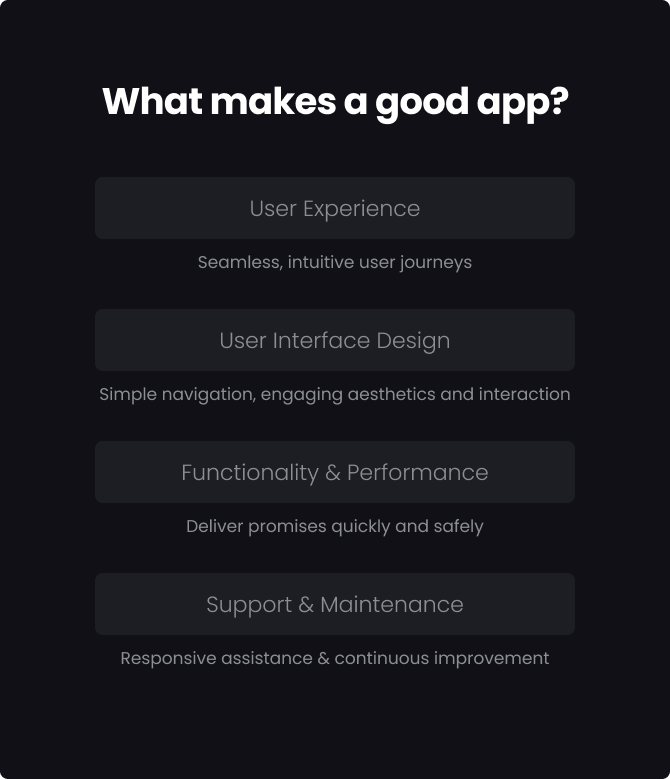
Final Thoughts
I believe an outstanding app excels in all these areas, creating a holistic and satisfying user experience. It’s about more than just fulfilling a need; it’s about doing so in a delightful, efficient, and, above all, user-centric way. The apps that have made the most significant impact on me are those that have not only served a purpose but have also provided an experience that is enriching and memorable.
Share Your App Experiences
Now, I turn the conversation over to you, the readers. What apps have made a difference in your life? Which elements do you value the most in an app?
I invite you to share your experiences and thoughts on what makes an app outstanding. Your insights and personal stories make this discussion about digital tools more enriching and comprehensive.


